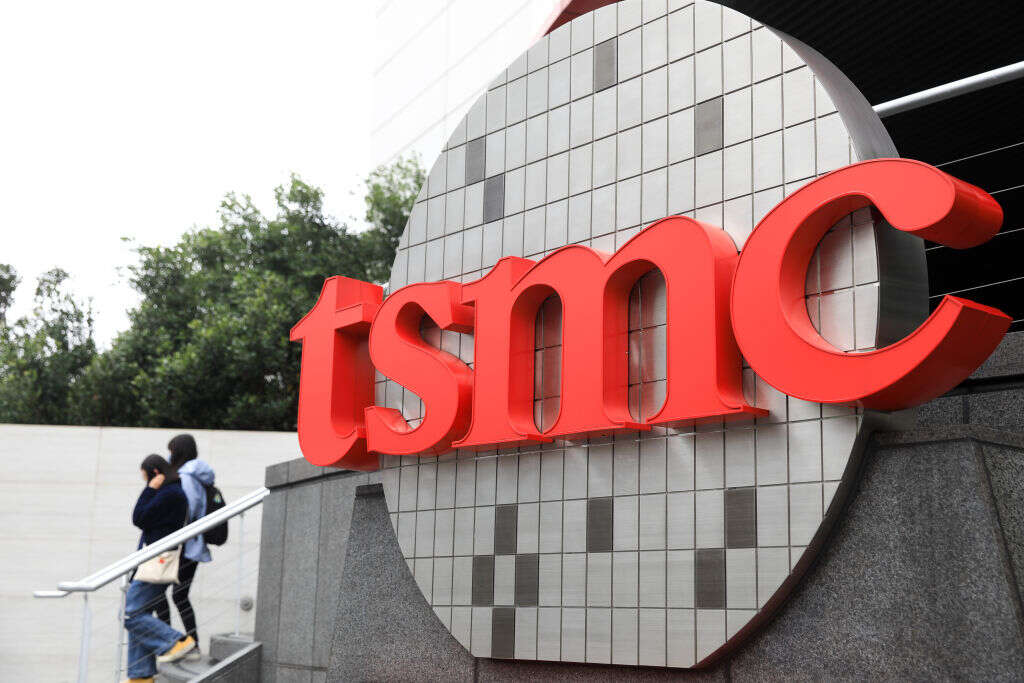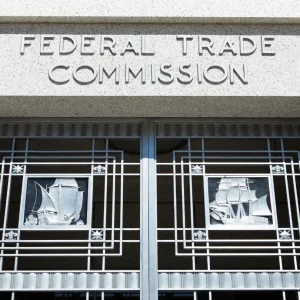
Though the decorations had long since been packed away, January saw the Taiwan Semiconductor Manufacturing Company (TSMC) deliver a late Christmas present to its shareholders in the form of a bumper crop of financial results.
TSMC reported revenue of $15.7bn for the three months to December 2021, with profits of $6bn, beating most analysts expectations. With forecasts of further growth in the coming quarter, the news was enough to send the company’s share price rocketing to a record high of 683 Taiwanese dollars ($24.57 US).
As the world’s largest contract chip manufacturer, TSMC has been riding the wave of the global chip shortage, with customers lining up to grab a slice of its in-demand chip foundry, or fab, capacity. And the company is keen for this to continue, and used its call with investors to outline plans for between $40-$44bn of capital investment (it spent $30bn in 2021), in Taiwan and beyond, to ensure its market dominance continues.
Such resources for capital projects dwarf those available to its handful of rivals in the semiconductor manufacturing space, and as such the company’s position looks unassailable. But TSMC will need to beware of business and geopolitical factors if it is to avoid problems maintaining its dominance of the market.
Can any of TSMC’s rivals catch up?
TSMC is a pure foundry business, meaning it doesn’t sell any of its own chips but concentrates on producing semiconductors for others. Its position as market leader has been built on engineering excellence, developing the ability to manufacture the low-power, high-performance, chips which have been key to the mobile revolution. TSMC enjoys a strong position in the market, taking 53% of all global foundry revenue in Q2 2021, according to data from TrendForce, and counts Apple, Nvidia and Qualcomm among its customers.
TSMC is expected to bring its 3nm process node online this year, meaning it will be able to cram more transistors onto a single chip than ever before. This will allow customers to develop faster, more efficient, devices. The only other chip manufacturer in the world capable of offering similar, leading-edge services, South Korea’s Samsung, has less than half of TSMC’s market share, with 17.4%.
Taking a substantial chunk out of TSMC's market dominance is likely to take its rivals at least a decade, says Mike Orme, an analyst who covers the semiconductor market for GlobalData. "TSMC has matchless customer relationships based on total trust as well as its, currently equally matchless, technical prowess," he says. "It has the world's top engineering talent base, experienced and battle-tested management, as well as Taiwan-based cost efficiencies and government support."
Ruthless execution has also been to key to TSMC's rise, says Dan Hutcheson, vice chair of semiconductor industry analysis company TechInsights. "The big thing you see right now is that TSMC’s R&D has been firing on all cylinders," he says. "And they’re just not making simple mistakes. That’s where they’ve been in the lead." He adds that the diversity of businesses the company serves also helps it react quickly to problems. "Its customers are pushing in multiple directions, so they're able to see and address failures early on," he says. "And if they start slipping behind then their customers are all over them. A big organisation like Intel doesn't necessarily get that."
Intel, previously the gold standard in chip innovation, has been beset by manufacturing delays in recent years, but is now positioning itself as a potential rival to TSMC. Having traditionally focused on building chips for its own use, the company is now moving into foundry services with its IDM 2.0 strategy, announced last year. It has also been upping its focus on R&D, with its most recent annual results showing it spent $15.19bn on research projects in 2021, a 12% increase compared to 2020. This far outstrips TSMC's last reported R&D spend, $3.92bn in 2020.
But while its technology catches up, Intel has been relying on TSMC to produce its own leading-edge chips, contracting the Taiwanese company to build its ARC GPU on the 6nm process node. It also plans to use TSMC's 3nm process when it comes online.
Can Intel realistically expect to catch its rival as it continually strengthens it by giving it business? "After 2025, Intel may be able to narrow the gap although it's already effectively committed to TSMC 3nm beyond then," Orme says. He points to the fact that early customers that have committed to the Intel foundry include Amazon, through its Amazon Web Services cloud division. "As America's national chip champion, with public sector subsidies and preferential US government and affiliated custom for its US foundries, it could knock TSMC out of some accounts," he adds. "But Intel still has a lot to do to prove that it's truly turned the corner on the manufacturing front after the woes of the last five years."
Whether it's Intel or Samsung, Hutcheson says a rival knocking TSMC off its perch is not beyond the realms of possibility. "Chipmaking is not like the smartphone industry, where you have companies like Apple building these kingdoms that can’t be taken down," he says. "There's interplay with genius engineers, decision making and capital. TSMC has the advantage at the moment, but we've seen in the past that all it takes is your R&D operation to slip up in a few times and it can all change."
Is TSMC's global expansion a risk?
TSMC's capital expenditure is funding a raft of projects outside Taiwan. It is building a 5nm fab in Arizona in the US at a cost of $12bn, and is reportedly also considering a 3nm foundry in a nearby location. It recently announced it was partnering with Sony to build a $7bn fab in Japan, and is also thought to be looking to open a foundry in Germany that would cater for the older 12nm process node.
While this expansion will deliver growth opportunities, it could also bring problems, particularly when it comes to workplace culture. Concerns have already been raised by staff recruited to work in the as-yet-unfinished Arizona plant that staff in Taiwan routinely work 12-hour days, the EE Times reported, citing posts on recruitment website Glassdoor from TSMC employees.
Hutcheson says previous attempts to expand outside Taiwan by TSMC have floundered for this reason. "They’ve never successfully run manufacturing outside Taiwan," he says. "There have been marginal gains but they have never seeded anything successful. So it’s a huge risk because they rely on a very tightly coupled Taiwanese culture which is a mixture of Chinese and American. In a way it could be like what we saw in Japan in the 1970s and 1980s – it rose as a tech power but then fell again when it tried to go global."
Intel is investing in fabs too, and is spending $20bn on two new production facilities at its existing site in Arizona. For TSMC, moving to the US will incur considerable costs, Hutcheson says, and make it more likely companies will also look to Intel as a way to spread the risk of being so reliant on a single supplier of chips. "A lot of key customers want to use everybody because they don’t want TSMC to be as strong as it is now," he says. "TSMC’s market share and global position is a definite threat."
The chip industry's previously cyclical nature could also leave TSMC exposed if demand falls and it is left with surplus manufacturing capacity. Orme believes the company is banking on a change in the established cycle of 'boom and bust' which the industry has seen in the past. "It is assuming that 5G and an insatiable and compounding high-performance computing demand for silicon will morph the chip industry from a highly cyclical one into a structural growth business over the next decade," he argues.
Does TSMC have geopolitical problems ahead?
Continuing tensions between the US and China also have the potential to cause problems for TSMC's business, says John Lee, director of East-West Futures, a company which provides research on China's digital economy. "The basic geopolitical problem for TSMC is that Chinese firms are increasingly important customers in both trailing and cutting edge semiconductor manufacturing," he says. "So fallout from US-China tensions will definitely not be good for their business, though that's true for a vast range of companies these days."
Indeed, TSMC severed ties with Huawei after it was blacklisted by the US government in 2020 over security concerns. It has also reportedly come under pressure from the US government not to build new fabs in China, where it is set to construct a $2.8bn facility for 28nm process node chips.
Taiwan's proximity to China could also be an issue for TSMC. The government in Beijing has long coveted regaining control of the country, and yesterday a policy adviser to the Chinese regime, Professor Jin Canrong, was reported as saying that President Xi Jinping is aiming to unify China and Taiwan by 2027, and will use force if necessary.
TSMC's global strategic importance is such that a recent paper from academics at the US Army War College suggested that the Taiwanese government should be prepared to destroy the company's manufacturing facilities if the threat of invasion by China becomes a real one. This strategy, dubbed 'Broken Nest' by authors Jarred McKinney and Peter Harris, would be designed to make an invasion seem counterproductive to the Chinese.
Lee is sceptical that gaining control of TSMC would be a factor in any invasion, and says it would be in China's interests to maintain the status quo when it comes to semiconductors. "It's a globally integrated supply chain in which TSMC depends on inputs from the US, Japan, Korea and Europe," he explains. "A Taiwan invasion would disrupt all of this. China will benefit much more if Taiwanese firms can continue doing business in China, which depends on political tensions remaining more or less under control."
"If the CCP top leadership decides to take escalated measures against Taiwan," he adds, "it will be for political reasons, not because of the semiconductor industry."






